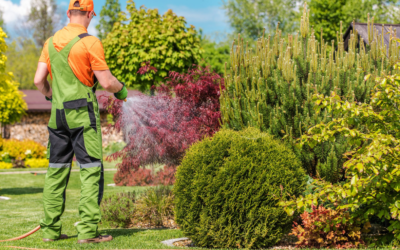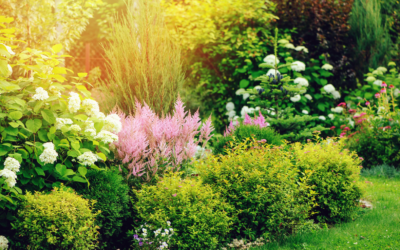 Most shrubs benefit from an early spring pruning to encourage healthy growth and flowering. But before you morph into a horticultural Edward Scissorhands, take a few moments to learn what types of pruning will benefit your landscape plants, and what will lead to disappointment.
Most shrubs benefit from an early spring pruning to encourage healthy growth and flowering. But before you morph into a horticultural Edward Scissorhands, take a few moments to learn what types of pruning will benefit your landscape plants, and what will lead to disappointment.
Remove Dead Branches and Suckers to Prevent Disease
Removing dead, damaged or diseased branches is important to prevent insect infestation and disease on any plant. “Suckers” growing up from the soil and water sprouts—the unwanted vertical growth on trunks and branches—should be eliminated, too.
When to Prune Flowering Shrubs
Spring-flowering shrubs bear their blooms on wood formed the previous year. Wait until they’ve finished flowering to prune them, but do so immediately after or you risk cutting away new growth that’s needed for next spring’s flowering. Remove some of the oldest shoots all the way to the ground to encourage new stems to grow and bloom next year.
The best time to prune late-bloomers is in the winter while they’re dormant, but you can trim them early in the spring before they show new growth. You can cut many of them close to or all the way down to the ground in late winter while they’re dormant, but since they flower on new growth, the later you prune, the more careful you need to be.
Prune Non-Flowering Shrubs While Dormant
Timing the pruning of non-flowering shrubs and hedges isn’t as critical as flowering types, but if you plan major surgery, doing it while the plant is dormant in winter or very early spring is best. Avoid late season pruning because the new growth it encourages won’t harden off in time for winter.
Hedge Shearing and Pruning
Hedges need to be pruned in the spring and again in midsummer to stay dense and attractive. Once they’ve approached the desired height, cut new growth back to about 2 inches from the last pruning. Keep hedges wider at the bottom to let all areas get sun and prevent legginess. If you choose shrubs with a mature height and width that gives the amount of screening desired, little or no pruning may be necessary.
Shearing hedges can be done for a more formal look, but sheared hedges still need periodic pruning to maintain their health and good looks.
Regular Pruning is Rejuvenating and Healthy
Older shrubs and hedges need periodic thinning or rejuvenation to remain healthy and attractive. Cut up to one-third of the oldest stems down to the ground to encourage new growth. This may reduce blooms on flowering shrubs, but you’ll be rewarded the following year.
Donovan Arborists offers complete pruning and shearing services for Denver-area landscapes. We’re happy to give free estimates to homeowners and property managers for any services they may need. Give Paul a call at 303-623-8733.




